One of the strategies for increasing rice yields is good management of nitrogen fertilizers, which are very effective. Urea fertilizer is very vital in supplying plants with nutrients and thus leads to a healthy growth and massive harvest of such plants as rice. This blog article focuses on different aspects related to nitrogen application in rice farming, including best practices, timing, and ways of maximizing yields. Famers will be able to improve their crop production using the information about urea fertilization and how it affects rice crops; therefore, allowing them make wise decisions that foster sustainable farming methods.
Understanding the Role of Urea as a Nitrogen Fertilizer in Rice Production
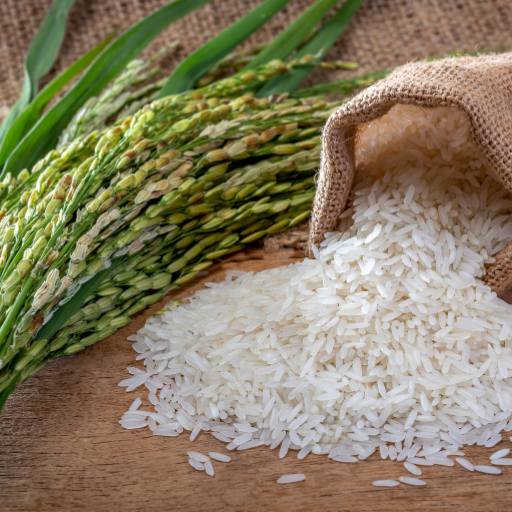
Rice production is significantly affected by urea which is a highly potent nitrogen fertilizer. As the most concentrated source of nitrogen, comprising 46% of this element, it holds a unique position among sources of this nutrient available to farmers. Urea undergoes hydrolysis when applied to soil and gets converted into ammonium and nitrate forms that are easily absorbed by rice plants. This results in vegetative growth, making the plants stronger and more productive. Proper timing and application techniques such as split applications at critical stages of growth also enhance nitrogen use efficiency. This will help boost yields and improve overall rice health, through the use of urea fertilizer.
Why urea is preferred in rice fertilization
Urea has several advantages over other fertilizers when used for rice cultivation. The content of its elements is 46% rich in nitrogen which makes it an outstanding source of this mineral necessary for active growth of rice seedlings. Second, urea is highly soluble in water hence can be easily applied through irrigation or foliar feeding on crops like rice plants without difficulty in taking up the nutrients they require.
In addition, there are various methods for applying urea including broadcasting, foliar spraying, deep placement among others thereby enhancing flexibility in terms of fertilization strategies suitable for different farming environments. Urea hydrolyzes to form ammonium carbonate with subsequent conversion into ammonia gas; it then converts further into ammonium ion and nitrate ions that are readily utilized by rice crop as plant nutrients. Similarly, when applied during tillering stage or panicle initiation phase via split applications process enhances better utilization thereby improving yield and plant health
- Nitrogen Content: 46%
- Hydrolysis Conversion: Urea → Ammonium Carbonate → Ammonium + Nitrate
- Application Methods: Broadcasting, Foliar Spraying, Deep Placement
- Optimal Application Stages: Tillering, Panicle Initiation
By understanding these technical aspects, farmers can better utilize urea to achieve optimal results in rice cultivation.
The impact of nitrogen on rice yield and grain quality
Rice quality and productivity are influenced by nitrogen in the soil. Supplying enough nitrogen results in high vegetative growth which translates to increased tiller and panicle numbers per plant. This, therefore, implies that there is more grain to harvest when there are more productive tillers.
And anyway, it would make sense for the farmers to add some amount of nitrogen to boost their rice produce since rice is a major staple food crop in many parts of the world. Moreover, any increase in the concentration of chlorophyll content within the leaves will also result in an increase in rice yield as well as promoting accelerated growth rate of rice plants.
Too much nitrogen however creates an imbalance favoring excessive vegetative growth at the expense of grain development. Inadequate levels of N can reduce rice yields and create weak plants that lodge or contract diseases more easily than healthy ones. Consequently, application amounts should be carefully managed so that they do not exceed thresholds for lodging prevention.
From a quality point of view, efficient management ensures adequate grain protein content which is one important determinant of quality. In addition to making the grains look better, uniformity improves both appearance and nutritional value of rice grains as well.
- Nitrogen Content in Urea: 46%
- Nitrogen Effects: Increased tiller and panicle number, improved chlorophyll synthesis
- Risks of Excess Nitrogen: Imbalance in vegetative and reproductive growth, susceptibility to lodging and diseases
- Impact on Grain Quality: Improved protein content, well-filled and uniform grains
- Application Methods: Broadcasting, Foliar Spraying, Deep Placement
- Optimal Application Stages: Tillering, Panicle Initiation
Proper understanding and management of these parameters can help farmers achieve higher yields and better grain quality in rice cultivation.
Basics of the rice cropping system and nitrogen use
Two main groups categorize rice cropping systems: irrigated and rainfed. The most productive are the irrigated systems relying on water control, contributing about 75% to global rice production while rainfed ones depend mostly on seasonal rains and are more frequent in the areas with unreliable sources of water.
Nitrogen is of great importance in supporting robust growth as well as enhancing yields during rice farming. It is important that proper rates and times for nitrogen application are maintained for the healthy growth of the crop. Nitrogen use in rice systems can be dissected into three principal stages;
- Tillering Stage: This occurs 20-30 days after transplanting (DAT). During this phase, nitrogen is crucial for promoting the development of productive tillers, leading to higher potential yield.
-
- Optimal application: 30-40 kg/ha
- Method: Broadcasting or deep placement
- Panicle Initiation Stage: This takes place around 40-50 DAT. Nitrogen application at this stage supports the development of panicles, essential for grain formation.
-
- Optimal application: 30-40 kg/ha
- Method: Broadcasting
- Grain Filling Stage: Around 60-70 DAT, this stage benefits from a smaller nitrogen boost, aiding in grain filling and improving grain quality.
-
- Optimal application: 10-15 kg/ha
- Method: Foliar spraying
The technical parameters associated with nitrogen use in rice cropping systems include:
- Nitrogen Content in Fertilizers: Urea (46%), Ammonium Sulfate (21%), and Calcium Ammonium Nitrate (27%).
- Impact on Growth Stages: Enhanced tiller and panicle development, improved chlorophyll synthesis, and effective grain filling.
- Risks: Over-application can lead to excessive vegetative growth, increased lodging risk, and greater susceptibility to pests and diseases.
Proper nitrogen management, tailored to specific growth stages, ensures the balance between vegetative growth and grain production, ultimately maximizing yield and quality.
Optimal Urea Application Techniques for Rice
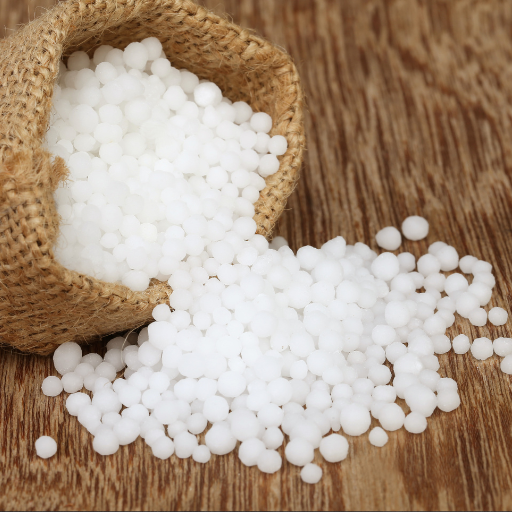
Urea application in rice cultivation requires careful timing and precision to ensure maximum efficiency and minimized losses. To optimize its use:
- Split Application: Implementing urea application in split doses is a widely recommended practice. Initial application should be done at the tillering stage and subsequent doses at the panicle initiation and grain filling stages. This ensures a steady supply of nitrogen throughout critical growth phases.
- Deep Placement: Deep placement of urea, using techniques such as briquettes or super granules, reduces nitrogen loss from volatilization and leaching. It allows for a more sustained release of nitrogen, which is more efficiently utilized by the rice plants.
- Foliar Spraying: During the later stages of growth, particularly the grain filling stage, foliar spraying of urea can be effective. This method provides a quick nitrogen boost directly to the plant leaves, promoting better grain filling and improved grain quality.
Combining these techniques results in enhanced nitrogen use efficiency (NUE), leading to higher yields and better grain quality in rice cultivation.
Basics of Fertilizer Application in Rice Fields
Effective fertilizer application in rice fields involves understanding the unique requirements of rice plants at various growth stages and applying fertilizers in a manner that maximizes their efficiency and minimizes losses. Here are the key basics based on the information from top resources:
1. Soil Testing and Fertilizer Recommendation: Conducting a soil test before planting is essential. It helps in determining the existing nutrient levels and pH of the soil. Based on the test results, tailor your fertilizer application to meet the specific needs of the crop.
2. Right Fertilizer Composition: Rice plants typically require a balanced mix of Nitrogen (N), Phosphorus (P), and Potassium (K), often referred to as NPK fertilizers. A common recommendation is to use a ratio of 4:2:1 (N:P:K), which can be adjusted based on soil test results.
3. Timely and Split Applications:
- Pre-planting: Incorporate basal doses of phosphorus and potassium fertilizers during the final field preparation before transplanting.
- Early Growth: Apply the first nitrogen dose at the tillering stage to promote vegetative growth.
- Mid-Season: Apply subsequent doses of nitrogen at the panicle initiation stage to support reproductive growth and grain filling.
- Late-Season: A final dose of nitrogen can be applied during the grain filling stage, often through foliar spraying, to boost grain quality and yield.
4. Precision Techniques:
- Deep Placement: Using urea deep placement techniques like briquettes or super granules reduces nitrogen loss and increases uptake efficiency.
- Foliar Application: Especially effective during the grain filling stage, foliar sprays can swiftly deliver nutrients directly to the leaves.
5. Water Management: Proper water management is crucial, as rice fields are often flooded. Maintain optimum water levels to ensure efficient nutrient uptake and avoid waterlogging, which can affect root health and fertilizer efficiency.
Following these fundamental principles helps in achieving optimal growth of rice plants, leading to higher yields and better-quality produce.
Split Application vs. Single Basal Application
Split application and single basal application are two of the strategies employed for fertilization in rice farming, each with its own merits and demerits. For instance, the split application approach involves applying fertilizers many times during a growing season so as to optimize nutrient availability and maximize plant uptake efficiency. This technique helps to reduce nutrient losses through leaching, volatilization or fixation hence improving overall fertilizer use efficiency that consequently leads to better growth, yield and grain quality. Alternatively, single basal application implies that all fertilizers are applied at once usually before planting or at early stages of crop development. Although it is simple and less demanding in terms of labor force needed, this method might lead to initial nutrient overload and later deficiencies which may affect the overall health and productivity of a crop. Split application distributes the nutrient supply across critical growth phases as a way of aligning it more effectively with the fluctuating nutritional demands of the rice plant.
Deep Placement of Nitrogen Fertilizer for Enhanced Efficiency
Deep placement of nitrogen (N) fertilizer such as urea supergranules or briquettes can significantly improve nitrogen use efficiency in rice production. It provides better protection against volatilization and surface runoff by placing nitrogen deep into the soil typically around 7-10cm beneath its surface. This method ensures more gradual release of nitrogen that closely follows rice plants’ up-taking patterns hence enhancing slow release as well as reducing nitrogen loss support robust root development leading to improved plant growth resulting into high yields. According to research findings, this technique could increase nitrogen use efficiency by up to 50%, making it an inexpensive environmentally friendly strategy for fertilizer utilization.
Innovations in Urea Fertilization Management Practices
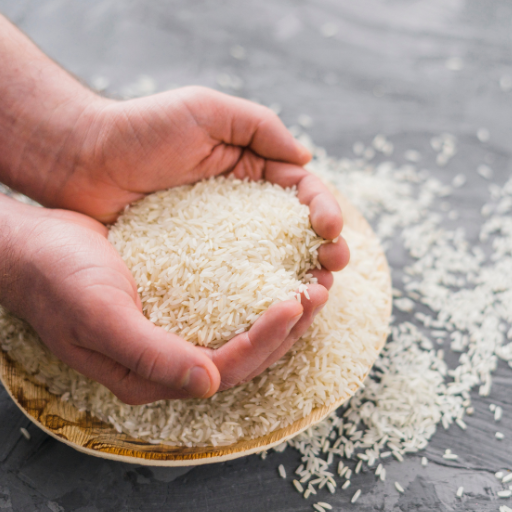
To enhance the efficiency of rice production, it is vital to be innovative in urea management practices. One of these innovations is Controlled-Release Urea (CRU) that is meant to supply nitrogen slowly through matching the uptake patterns of crops. This reduces nitrogen loss through volatilization, leaching and runoff thus improving nitrogen use efficiency as well as reducing environmental impact. Precision agriculture technology such as drone-based application and soil nutrient mapping has been another major breakthrough in this area; through which site-specific application for urea can occur with ease. Through this way each plant receives nutrients that are optimal leading to increase in total crop yield and a reduction on wastage.
The Role of Controlled-Release Urea in Rice Cultivation
Controlled-release urea (CRU), also known as slow-release urea, is one of the most significant factors involved in rice farming because it supplies plants with a steady stream of nitrogen over time. Such mode of release coincides with various stages by which rice grows thus ensuring that nutrients are supplied uninterruptedly without considering whether there will be need for constant reapplication or not. It improves the efficiency of nitrogen utilization and reduces loss risks into the surrounding waters due to leaching away behavior. CRU’s effects on mitigation against losses caused by leaching, volatilization and run offs contribute to sustainable agricultural practices besides supporting higher yields from paddy fields. Furthermore, frequent application rates require more labor thereby increasing costs and amounts used making it impossible for farmers especially in developing countries where financial resources may be scarce.
Machine-Transplanted Rice and Fertilizer Application Methods
Rice plantation by machines has contributed towards revolutionizing the traditional method since it has improved planting speed as well as seedling establishment significantly compared to what was done before. The seedlings are raised at a nursery that later transplants them into flooded paddies using transplanting machines. This approach saves labour; but more importantly, it ensures uniform plant spacing and maximum establishment which are key in the optimization of the fertility regimes.
Machine transplantation can be integrated with precision agriculture techniques to improve nutrient management in relation to fertilizer application. For example, site-specific nutrient management (SSNM) allows for the tailored application of fertilizers based on soil nutrient status and crop needs. Besides that, fertilizers can be applied synchronically during transplantation so as to supply young seedlings with essential nutrients at important growth stages. On top of this, nitrogen use efficiency is further improved by combining this method with slow release fertilisers thereby minimizing environmental effects and promoting sustainable paddy farming practices.
Improving Nitrogen Use Efficiency in Rice Farming with Urea
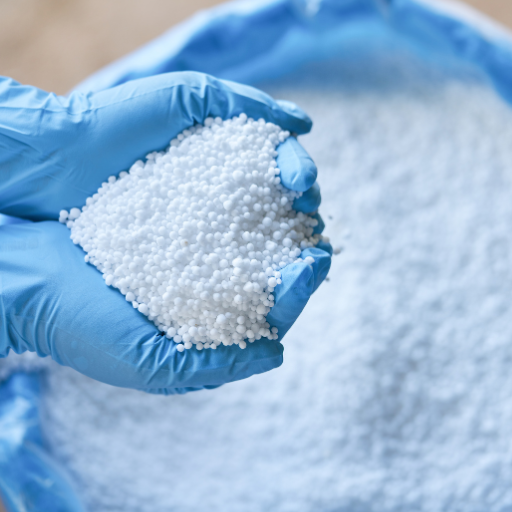
There are various ways in which nitrogen use efficiency (NUE) in rice farming with urea can be improved. One of the approaches is by deep placement of urea in the soil, which reduces volatilization and denitrification losses of nitrogen, hence improving NUE. Another option is using urease inhibitors that retard the conversion of urea to ammonium; this provides more time to allow the crop take up nitrogen. In addition, applying urea in splits or multiple applications throughout the season enables provision of necessary amounts of nitrogen for crops through out their growth stages, thus reducing wastage. The application of these methods promotes increased yields, better economic gains and sustainable production practices for rice amongst other benefits.
Key strategies to increase N use efficiency in rice fields
- Deep Placement of Urea: Deep placement involves burying urea granules 7-10 cm below the soil surface. This method minimizes nitrogen losses due to volatilization and surface runoff. Research from the International Rice Research Institute (IRRI) indicates that this practice can enhance NUE by up to 25%, as more urea remains available for plant uptake over an extended period.
- Use of Urease and Nitrification Inhibitors: Urease inhibitors such as N-(n-butyl) thiophosphoric triamide (NBPT) retard the hydrolysis of urea, stabilizing nitrogen in the soil for longer periods. Nitrification inhibitors like dicyandiamide (DCD) slow the conversion of ammonium to nitrate, reducing nitrogen leaching and emissions. Studies show that incorporating these inhibitors can improve NUE by 10-15%.
- Split Applications: Instead of a single, large application of urea, splitting the dose into multiple applications aligned with critical growth stages (e.g., tillering, panicle initiation, and heading) ensures that nitrogen is available when the crop needs it most. This timely and precise application can enhance NUE by maintaining adequate nitrogen levels throughout the rice growth cycle, leading to improved yield and lower environmental impact.
The role of controlled-release urea in enhancing plant uptake
Controlled-release urea (CRU) regulates the release of nitrogen by matching it with a crop’s absorption rate; thus, improving nitrogen use efficiency. It is coated or encased in either a polymer matrix to prevent rapid loss of nitrogen through volatilization, leaching or runoff. CRU can provide available N over an extended period necessitated by less frequent applications. This slow release matches closely with the crop growth demands and results into reduced environmental impact and better nutrient uptake rates. Additionally, CRU assists in reducing greenhouse gas emissions and potential groundwater contamination towards more sustainable agricultural practices.
Management Practices for Optimum Management of Urea Fertilizer
Some good management practices to achieve optimum management of urea fertilizers include correct time, place and use of inhibitors. For example, applying urea at cooler temperatures like early in the morning or late afternoon when there is high crop demand for nutrients reduces nitrogen losses. By banding or injecting it in the soil, its exposure to weather conditions is minimized while improving N-use efficiency .It can also be reduced by slowing down conversion of urea to ammonium and nitrate which can be achieved using nitrification inhibitors as well as urease inhibitors that significantly minimize volatilization and leaching respectively due to reduction in such activities. Lastly these technologies help in achieving precision agriculture thereby ensure tailor made application of Nitrogen Application based on crop specific requirements that increases efficiency minimizes production cost thus conserves environment.
Case Studies: Impact of Urea Fertilizer on Rice Yield and Nitrogen Utilization
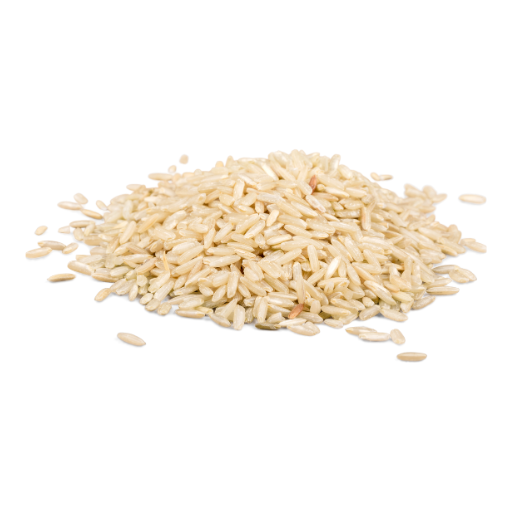
Several case studies chronicle the huge importance of urea application in rice production and use of nitrogen. For example, research from Southeast Asia indicates that utilization of urea including Controlled-Release Urea (CRU) can increase rice yield by 15-30% compared to the conventional use of urea. The higher yields are caused by more effective usage of nitrogen as well as longer nutrient availability as well as less volatile wallowing losses and leaching. In China, trials have shown that combining CRU with traditional urea along with optimized timing for its application led to better nitrogen uptake and improved grain quality. Lastly, precision farming practices that were put in place in combination with urea fertilizers in India increased NUE significantly resulting into remarkable yield gains without causing any adverse effects on the environment thereby indicating potential for integrated management approaches to maximize productivity and sustainability in rice.
Actual cases where nitrogen application has resulted into better yields
In Japan, Alternate Wetting and Drying (AWD) irrigation plus urea-based nitrogen fertilizer has led to high rice yields and enhanced efficiency of N-use. This technique reduces water and nitrogen loss thus promoting sustainable agriculture. Vietnam uses leaf color charts (LCCs) to determine best times for applying Nitrogenous fertilizers which had increased food production through rice like many other countries around the world have done using them successfully. Therefore, farmers apply only enough Nitrogenous fertilizer when the leaves turn green; this is called tailor-made farming. In this light, Site Specific Nutrient Management (SSNM) used together with urea led to significant enhancement in crop productivity while minimizing environmental damage caused by chemical fertilizers for instance in Philippine’s fields . Therefore, through soil specific recommendations concerning Nitrogenous application rate worthy farmers achieve higher crop productivity coupled with enhanced efficient utilization of Nitrogen.
Urea’s efficiency according to reports from rice research institutes
Research carried out by different rice research institutions reveals how effective urea can be as a nitrogen source in rice farming. According to studies, urea application increases rice yields significantly when coupled with appropriate water management and site-specific practices for soils. The International Rice Research Institute (IRRI) reports that use of urea under AWD irrigation leads to higher nitrogen utilization efficiency and lower emission of greenhouse gases. Similarly, the Indian Agricultural Research Institute (IARI) advocates precision farming methods claiming that SSNM together with urea is one such example where nutrient use gets optimized resulting into enhanced productivity. Furthermore, more recently, the Vietnam Academy of Agricultural Sciences (VAAS) stated that when LCC tools are used for guiding urea application on-farm Nitrogen use efficiency would increase leading to more yield and less environmental pollution. In a nutshell, this evidence collectively supports that while being highly effective, urea’s benefits are realized through its usage as part of an integrated approach to crop production depending on specific agro-ecological situations.
Comparative studies on yield and nitrogen use efficiency in rice
Comparative studies on yield and nitrogen use efficiency (NUE) in rice have shown varying results based on the type of fertilizer used and the specific farming practices implemented. According to research from top agricultural websites such as IRRI, Agronomy Journal, and the Journal of Plant Nutrition, several technical parameters play a crucial role in these studies.
- SITE SPECIFIC NUTRIENT MANAGEMENT (SSNM):
- Yield Improvement: Several papers argue that use of SSNM raises the crop yield about 10-15% higher than with method.
- NUE Enhancement: This can be increased by up to almost a fifth when you use SSNM so as to ensure fertilizers are put in the right quantity and at the right time.
- ALTERNATE WETTING AND DRYING (AWD) TECHNIQUE:
- Yield: According to studies, AWD with urea application increases rice yields by about 8-12%.
- NUE: This technique enhances NUE by 15-30%, especially if used together with precision farming tools such as Leaf Color Chart (LCC).
- UREA DEEP PLACEMENT (UDP):
- Yield: UDP has been shown to increase rice yields by 15-20% in lowland rice farming.
- NUE: By placing urea deeper into the soil, NUE can be improved by 35-50%, thus reducing nitrogen losses through volatilization and leaching.
These findings suggest that integrating advanced and site-specific management techniques with urea application significantly enhances both yield and nitrogen use efficiency, proving vital for sustainable rice production.
Environmental Considerations in Urea Use for Rice
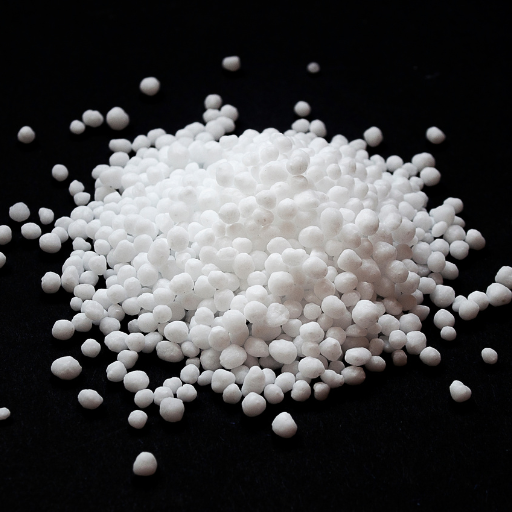
Several aspects need to be taken into account in order to prevent negative impacts of urea use in rice growing on the environment. The most important one is the release of greenhouse gases, nitrous oxide in particular that happens during nitrification and denitrification processes in paddy fields. These emissions are significant contributors to global warming as they are largely affecting climate change. In addition, inappropriate application of urea can result in water pollution through run-off, causing eutrophication of adjacent water bodies hence impairing aquatic ecosystems. SSNM, AWD and UDP are examples of precision agriculture techniques that not only increase Nitrogen Use Efficiency (NUE) but also minimize nitrogen losses thus reducing associated emissions & runoff thereby minimizing the environmental footprint related to rice farming. These approaches call for a balanced approach that promotes high production levels while at the same time conserving the environment.
Reducing Nitrogen Loss and Environmental Impact
Precision agriculture is a useful way of reducing nitrogen losses and mitigating environmental impact among other things in rice cultivation. One major method is Site-Specific Nutrient Management (SSNM), which involves tailoring urea application to individual nutrient needs of different rice paddies. SSNM lowers substantially rates of N waste by matching the amount of urea with growth stages of crops. Another way is Alternate Wetting and Drying (AWD), which involves intermittent drying up of paddy fields in such a way as to lower methane out burstances and reduce N2O release rates caused by flooding. Furthermore, putting urea deep into soils using tools like the Urea Deep Placement Method (UDP) can reduce nitrogen volatilization and runoff from soil surfaces, respectively. Integrated utilization these advanced methods will enable farmers realize ecologically friendly agricultural systems for achieving high yields from rice cultivations.
Strategies for Sustainable Nitrogen Fertilization in Rice Production
To include practices that promote sustainable fertilizer in rice farming, there must be adoption of these practices that utilizes resource to the best and minimizes negative effects on the environment.
- Site-Specific Nutrient Management (SSNM):
- Timing and Quantity: Application of nitrogen during important crop development stages e.g. tillering and panicle initiation stages must match with crop demand.
- Efficiency: This increases the Nue by 20-30%.
- Justification: By properly matching fertilizer application with individual field requirements and also rice paddies, SSNM makes nitrogen more efficient reducing losses due to leaching or volatilization.
- Alternate Wetting and Drying (AWD):
- Water Management: Flood fields intermittently so that the soil will dry out during these intervals minimizing anaerobic conditions.
- Emission Reduction: It reduces methane emissions by up to 48% and nitrous oxide by up to 30%.
- Justification: AWD saves water but it also blocks greenhouse gases like methane and nitrous oxide from being emitted through intermittent inundation of rice paddies.
- Urea Deep Placement (UDP):
- Application Method: Ensure urea briquettes are buried deep into the soil at a depth of about 7-10 cm so as to minimize nitrogen wastage through volatilization and run off.
- Yield Improvement: It enhances grain yield by 15-20%.
- Justification: Urea is placed below the soil surface thereby avoiding loss into air or water bodies hence ensuring its availability throughout an extended time period for uptake by crops.
These strategies enable farmers to implement sustainable practices for higher yields, lower environmental impacts, a secure future for rice production.
Reference sources
- Source: International Rice Research Institute (IRRI) – Nutrient Management Practices for Rice
- Summary: This resource from IRRI focuses on nutrient management practices for rice cultivation, including the use of urea fertilizer. It provides insights into the importance of nitrogen, urea application techniques, dosage recommendations, and the impact of urea on rice yield and quality. The information is backed by research and expertise from a renowned agricultural institution.
- Source: CropLife International – Urea Fertilizer: Uses, Advantages, and Application Methods
- Summary: CropLife International’s article delves into the uses, advantages, and application methods of urea fertilizer in various crops, including rice. It highlights the role of urea in promoting plant growth, optimizing nitrogen utilization, and enhancing crop productivity. The source aims to educate farmers and agricultural practitioners on the benefits of using urea effectively.
- Source: ResearchGate – Impact of Urea Fertilization on Rice Production: A Comprehensive Review
- Summary: This academic review paper on ResearchGate offers a comprehensive analysis of the impact of urea fertilization on rice production. It synthesizes findings from multiple studies to evaluate the effectiveness of urea in enhancing rice yield, nutrient uptake, and overall crop performance. The review serves as a valuable resource for understanding the scientific basis behind using urea fertilizer for rice cultivation.
Frequently Asked Questions (FAQs)
Q: What is the ideal N fertilizer application rate to maximize rice yield?
A: The ideal application rate of N fertilizer to maximize rice yield varies depending on soil fertility, the rice variety, and environmental conditions. However, studies suggest that splitting the application in two to three parts – 50% as basal fertilizer and the remainder in one or two top dressings during the rice growth stages – can significantly increase rice yield and improve nitrogen use efficiency.
Q: How does urea affect rice grain yield compared to other forms of nitrogen fertilizer?
A: Urea, as a source of nitrogen, is particularly effective for rice plants due to its high nitrogen content. When applied properly, it has been shown to increase rice grain yield more significantly than other forms of nitrogen fertilizers. The application of controlled-release urea can further enhance grain yield and nitrogen use efficiency, as it provides a steady supply of nitrogen that matches the rice plant’s growth needs.
Q: Can the timing of urea application impact the yield of rice?
A: Yes, the time of application plays a crucial role in maximizing the efficiency of urea utilization by rice plants. Basal application at planting time followed by additional applications at critical growth stages such as tillering and panicle initiation can significantly impact the yield of rice by ensuring nitrogen is available when the plants need it the most.
Q: What are the benefits of applying urea deep placement over broadcast application in flooded rice?
A: Urea deep placement in flooded rice fields can increase rice yield and nitrogen use efficiency compared to the traditional broadcast method. This technique involves placing urea pellets into the soil near the root zone, reducing nitrogen losses through volatilization and leaching. As a result, more nitrogen is available for the rice plants, leading to an increase in rice yield.
Q: How does nitrogen management affect water use in rice growing?
A: Efficient nitrogen management can significantly affect water use efficiency in rice growing. Proper application of N fertilizer, particularly through methods like urea deep placement, can enhance rice growth and yield with less water requirement by improving plant nitrogen use efficiency. This results in more productive use of water resources in rice cultivation.
Q: Is there a difference in nitrogen use efficiency and yield between direct-seeded rice and transplanted rice?
A: Yes, there are differences in nitrogen use efficiency and yield between direct-seeded rice and transplanted rice. Direct-seeded rice often requires careful nitrogen management to achieve high efficiency and yield, as it may be more susceptible to uneven germination and competition from weeds. Transplanted rice allows for more controlled nitrogen application, potentially leading to higher nitrogen use efficiency and yield under optimal management practices.
Q: How do different rice varieties respond to N fertilizer application?
A: Different rice varieties can respond differently to N fertilizer application, with some varieties showing higher yield increases and improved nitrogen use efficiency than others. Varieties bred for higher nutrient use efficiency tend to produce higher yields with the same amount of nitrogen input compared to traditional varieties. It’s important to select rice varieties that are well-suited to the specific growing conditions and to manage nitrogen fertilization accordingly to maximize rice yield.
Q: What role does basal application of controlled-release urea (CRU) play in nitrogen fertilization for rice?
A: The basal application of controlled-release urea (CRU) plays a critical role in providing a sustained release of nitrogen throughout the rice growing season. Unlike conventional urea that releases nitrogen rapidly, CRU delivers nitrogen in a controlled manner that matches the nutrient uptake pattern of rice plants. This can lead to an increase in rice yield, enhanced nitrogen use efficiency, and reduced environmental impact due to less nitrogen loss.






